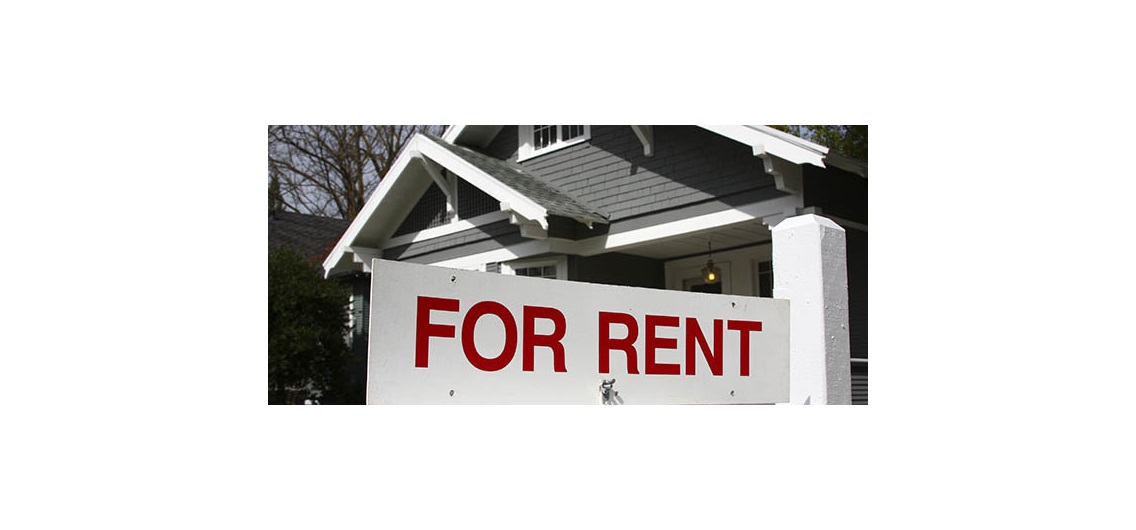
Calgary's trusted source of real estate news, advice and statistics since 1983.
News
Aug. 04, 2015 | CREBNow
Market remains balanced despite easing in absorption rates
Supply gain in apartment sector threatens to impact price
Declines in residential housing sales activity eased in July, creating, when combined with stable inventory levels, no change to the month-over-month price.
Year-over-year sales fell by 14 per cent to 1,995 units in July, compared to a 17.8 per cent decrease the previous month. Despite the decline, sales activity during the month was consistent with the 10-year average.
While sales decline eased, so too did the decline in new listings, causing the unadjusted sales-to-new listings ratio to edge down to 67 per cent in July and months of supply to increase to 2.53 months.
Declines in residential housing sales activity eased in July, creating, when combined with stable inventory levels, no change to the month-over-month price.
Year-over-year sales fell by 14 per cent to 1,995 units in July, compared to a 17.8 per cent decrease the previous month. Despite the decline, sales activity during the month was consistent with the 10-year average.
While sales decline eased, so too did the decline in new listings, causing the unadjusted sales-to-new listings ratio to edge down to 67 per cent in July and months of supply to increase to 2.53 months.
News
Aug. 04, 2015 | Alex Frazer Harrison
Rosy picture for rentals
Several factors contributing to more favourable conditions
Calgary's rental market is emerging as an early winner this year as the result of improved vacancy rates, added inventory and a more conservative appetite among buyers in the resale housing sector.
CREB®'s mid-year forecast update, released earlier this week, notes more choice and less upward pressure on rents has, and will continue to, impact the resale market as more consumers choose to keep renting.
An April report from the Canadian Mortgage and Housing Corp. (CMHC) showed two-bedroom apartment and row vacancy rates rose to 3.6 per cent in 2015 – the highest level since 2010 – from 1.5 per cent the year prior.
Calgary's rental market is emerging as an early winner this year as the result of improved vacancy rates, added inventory and a more conservative appetite among buyers in the resale housing sector.
CREB®'s mid-year forecast update, released earlier this week, notes more choice and less upward pressure on rents has, and will continue to, impact the resale market as more consumers choose to keep renting.
An April report from the Canadian Mortgage and Housing Corp. (CMHC) showed two-bedroom apartment and row vacancy rates rose to 3.6 per cent in 2015 – the highest level since 2010 – from 1.5 per cent the year prior.
News
Aug. 01, 2015 | Joel Schlesinger
Bursting the bubble on overvaluation
Several reports have sounded the alarm our real estate market is grossly overvalued, but industry watchers contend Calgary isn't poised for the big crash some are forecasting
Reports suggesting Calgary's housing market is over-valued, supported by recent price corrections, are missing many of the obvious indicators saying otherwise, say experts.
The metrics used to measure affordability simply do not back up the argument that Calgary's real estate market is highly overvalued and ready for a precipitous drop in home values, said Robert Kavcic, a senior economist with Economic Research BMO Capital Markets in Toronto.
"One of the (metrics) we look at is the average mortgage payment as a share of income, and right now that's a little bit above the long-run norm of 27 per cent at about 29 per cent," he said.
Reports suggesting Calgary's housing market is over-valued, supported by recent price corrections, are missing many of the obvious indicators saying otherwise, say experts.
The metrics used to measure affordability simply do not back up the argument that Calgary's real estate market is highly overvalued and ready for a precipitous drop in home values, said Robert Kavcic, a senior economist with Economic Research BMO Capital Markets in Toronto.
"One of the (metrics) we look at is the average mortgage payment as a share of income, and right now that's a little bit above the long-run norm of 27 per cent at about 29 per cent," he said.
News
July 31, 2015 | Cody Stuart
Where we're going . . .
Outside factors will impact housing market through 2016
With the sun in Calgary rising and falling relative to the price of a barrel, it should be no surprise that the city's real estate market will continue to be impacted by economic realities beyond its control, say housing analysts.
Following a first half that can best be described as turbulent, the remainder of 2015 looks to bring more of the same for the city's housing market, with CREB®'s mid-year forecast update suggesting decreases across the board, including moderate price contraction.
"Further job losses are expected in the second half of the year," said CREB® chief economist Ann-Marie Lurie.
"These employment changes, combined with overall weakness and slower-than-anticipated recovery of oil prices, are expected to keep housing demand relatively weak for the rest of 2015.
With the sun in Calgary rising and falling relative to the price of a barrel, it should be no surprise that the city's real estate market will continue to be impacted by economic realities beyond its control, say housing analysts.
Following a first half that can best be described as turbulent, the remainder of 2015 looks to bring more of the same for the city's housing market, with CREB®'s mid-year forecast update suggesting decreases across the board, including moderate price contraction.
"Further job losses are expected in the second half of the year," said CREB® chief economist Ann-Marie Lurie.
"These employment changes, combined with overall weakness and slower-than-anticipated recovery of oil prices, are expected to keep housing demand relatively weak for the rest of 2015.
News
July 31, 2015 | Cody Stuart
Where we've been . . .
Roller-coaster ride to start 2015 ended with more balanced conditions
The arrival of 2015 was bound to signal a change of pace for Calgary's resale real estate industry, which had just wrapped a bow around a banner 2014.
In fact, with oil prices showing signs of deteriorating toward the end of 2014, December's four per cent sales decline – following 11 consecutive months of sales increases –was really a sign of things to come.
"Changes in the economic climate are expected to cool housing market conditions in 2015, and December activity may be the first indication of this shift," said CREB® chief economist Ann-Marie Lurie at the time.
That change came early and it came swift, with sales falling by more than 30 per cent in January to five-year lows even though new listings maintained their upward momentum by increasing by 37 per cent compared to the same period last year.
The arrival of 2015 was bound to signal a change of pace for Calgary's resale real estate industry, which had just wrapped a bow around a banner 2014.
In fact, with oil prices showing signs of deteriorating toward the end of 2014, December's four per cent sales decline – following 11 consecutive months of sales increases –was really a sign of things to come.
"Changes in the economic climate are expected to cool housing market conditions in 2015, and December activity may be the first indication of this shift," said CREB® chief economist Ann-Marie Lurie at the time.
That change came early and it came swift, with sales falling by more than 30 per cent in January to five-year lows even though new listings maintained their upward momentum by increasing by 37 per cent compared to the same period last year.
News
July 30, 2015 | CREBNow
A story of supply and demand
Dissecting the detached category
Sales activity declines in Calgary's detached resale housing segment over the first half of 2015 resembled that posted during the global economic crisis in 2009, according to CREB®'s mid-year forecast update.
Yet experts warn aggregate prices in Calgary's largest housing segment, which have started to fall, are being skewed by higher-priced markets, which experienced a more dramatic drop during the first half of the year.
"This year, we have seen sales decline in all price ranges. However, the decline in the luxury home market has been larger compared to lower-priced homes," said Richard Cho, principal of market analysis for Canada Mortgage and Housing Corp. (CMHC).
Detached sales totaled 6,203 units, a 25 per cent decline relative to the previous year, noted CREB®.
Sales activity declines in Calgary's detached resale housing segment over the first half of 2015 resembled that posted during the global economic crisis in 2009, according to CREB®'s mid-year forecast update.
Yet experts warn aggregate prices in Calgary's largest housing segment, which have started to fall, are being skewed by higher-priced markets, which experienced a more dramatic drop during the first half of the year.
"This year, we have seen sales decline in all price ranges. However, the decline in the luxury home market has been larger compared to lower-priced homes," said Richard Cho, principal of market analysis for Canada Mortgage and Housing Corp. (CMHC).
Detached sales totaled 6,203 units, a 25 per cent decline relative to the previous year, noted CREB®.
News
July 29, 2015 | CREBNow
5 things to know about CREB® mid-year forecast update
Today, CREB® unveiled its 2015 mid-year forecast update that indicated the Calgary regional resale housing market is in for a turbulent ride over the second half of the year as some economic realities set in.
Here are five takeaways from the 24-page document:
Not just a drop in the bucket
CREB®, citing a number of economists, warns that the broader effects of oil price shocks have yet to be fully realized in both the energy and non-energy sectors. Oil prices are expected to average $55 US per barrel, which is nearly 13 per cent lower than expectations from the end of 2014. What that means is all sectors, including housing, will likely face more downward pressure heading into 2016.
Weaker resale demand
Despite more favourable lending rates, housing demand will be weaker than we've have become used to. CREB® attributes that to further job losses expected this fall, rising unemployment levels and weaker migration numbers to the city. Overall, sales activity in the city is forecasted to decline by 22 per cent to 19,798 units in 2015 and prices will contract by 0.2 per cent.
Here are five takeaways from the 24-page document:
Not just a drop in the bucket
CREB®, citing a number of economists, warns that the broader effects of oil price shocks have yet to be fully realized in both the energy and non-energy sectors. Oil prices are expected to average $55 US per barrel, which is nearly 13 per cent lower than expectations from the end of 2014. What that means is all sectors, including housing, will likely face more downward pressure heading into 2016.
Weaker resale demand
Despite more favourable lending rates, housing demand will be weaker than we've have become used to. CREB® attributes that to further job losses expected this fall, rising unemployment levels and weaker migration numbers to the city. Overall, sales activity in the city is forecasted to decline by 22 per cent to 19,798 units in 2015 and prices will contract by 0.2 per cent.
News
July 29, 2015 | CREBNow
Housing prices to ease in second half, CREB® forecasts
Prices expected to remain stable
Continued weakness in housing demand will limit downward pressure on supply levels and cause prices to ease in the second half of the year, CREB® said in its 2015 mid-year forecast. Despite this anticipated retraction, Calgary's benchmark prices are only expected to decline by less than one per cent on an annual basis.
"Further job losses are expected in the second half of the year," said CREB® chief economist Ann-Marie Lurie. "These employment changes combined with overall weakness and slower than anticipated recovery of oil prices is expected to keep housing demand relatively weak for the rest of 2015. However, with the initial shock of oil price declines having dissipated, the pullback in sales activity in the second quarter is not expected to be as dramatic as the first part of the year," said Lurie.
Overall sales activity in the city of Calgary is forecasted to total 19,780 in 2015, a 22 per cent decline relative to last year, but only six per cent lower than average activity over the past five years.
Continued weakness in housing demand will limit downward pressure on supply levels and cause prices to ease in the second half of the year, CREB® said in its 2015 mid-year forecast. Despite this anticipated retraction, Calgary's benchmark prices are only expected to decline by less than one per cent on an annual basis.
"Further job losses are expected in the second half of the year," said CREB® chief economist Ann-Marie Lurie. "These employment changes combined with overall weakness and slower than anticipated recovery of oil prices is expected to keep housing demand relatively weak for the rest of 2015. However, with the initial shock of oil price declines having dissipated, the pullback in sales activity in the second quarter is not expected to be as dramatic as the first part of the year," said Lurie.
Overall sales activity in the city of Calgary is forecasted to total 19,780 in 2015, a 22 per cent decline relative to last year, but only six per cent lower than average activity over the past five years.
News
July 28, 2015 | Barbara Balfour
Outside-of-the-box look at affordable housing?
From shipping containers to crowd funding
A continuous decline in affordable housing, along with an increase in the populations who need it, is forcing Calgary agencies to seek creative solutions.
"I'm looking for anything that can help us provide housing in a more economical way," said David Watson, president and CEO of Attainable Homes Calgary, a not-for-profit that helps Calgarians at a moderate income level get on the property ladder. "The more ideas we can bring to the table to reduce the costs of houses, the better."
The citywide benchmark price for homes in Calgary in June totaled $455,400, a figure that puts housing firmly out of reach for many vulnerable Calgarians.
Meanwhile, the average rent for a two-bedroom apartment in the city rose by almost six per cent in the 12 months leading up to April 2015, according to Canada Mortgage and Housing Corp.
To address the crisis, Watson's organization is looking at all its options, including repurposing surplus shipping containers from China that are brought in by rail from Vancouver to Alberta. Carstairs-based Blocks Modular, for example, is currently turning the containers into stackable living spaces at a fraction of the cost of traditional homes.
A continuous decline in affordable housing, along with an increase in the populations who need it, is forcing Calgary agencies to seek creative solutions.
"I'm looking for anything that can help us provide housing in a more economical way," said David Watson, president and CEO of Attainable Homes Calgary, a not-for-profit that helps Calgarians at a moderate income level get on the property ladder. "The more ideas we can bring to the table to reduce the costs of houses, the better."
The citywide benchmark price for homes in Calgary in June totaled $455,400, a figure that puts housing firmly out of reach for many vulnerable Calgarians.
Meanwhile, the average rent for a two-bedroom apartment in the city rose by almost six per cent in the 12 months leading up to April 2015, according to Canada Mortgage and Housing Corp.
To address the crisis, Watson's organization is looking at all its options, including repurposing surplus shipping containers from China that are brought in by rail from Vancouver to Alberta. Carstairs-based Blocks Modular, for example, is currently turning the containers into stackable living spaces at a fraction of the cost of traditional homes.












